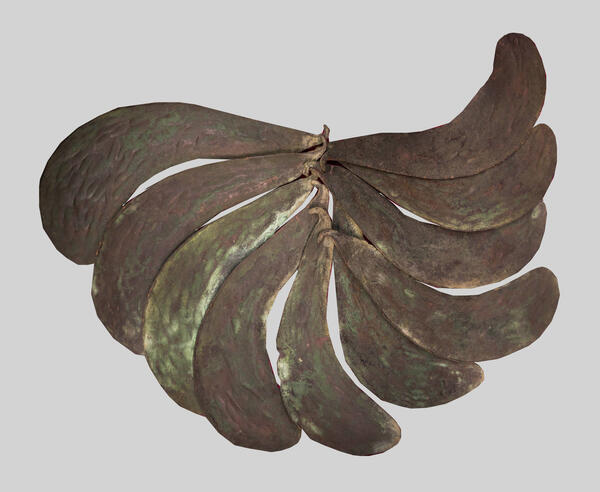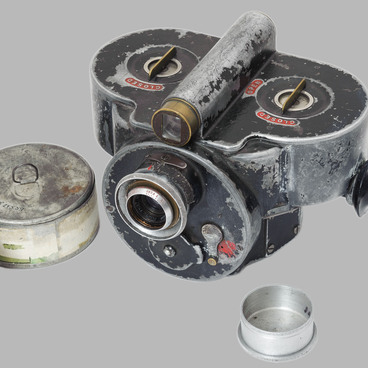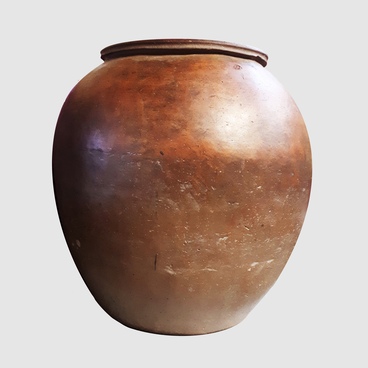A collection of copper sickles from Srubnaya culture is included in this exhibition. The hoard was discovered in 1964 during earthworks on the left bank of the Kamelik river, near the village of Perelyub, Saratov Region. Sixteen sickles were found with a combined weight of around six kilograms. Thirteen of them are included in this exhibition. The individual sickles range in weight from 330 to 450 grams and resemble incurved leaves. A hook-like bend sits at one end of the sickle. These hooks are used to attach the metal sickle to the handle. Similar sickles correspond with those used by the Srubnaya culture.
Researchers suggest that the tools were produced in the following way: to begin with, molten metal was poured into a clay or stone mold, before hot forging was carried out at temperatures between 500ºС and 700ºС. The final stage of the process was cold forging, which effectively toughened the metal and improved its cutting power. This technique gave the blade its characteristic longitudinal curve. Forging marks are clear to see from the short and shallow indentations on the incurved side of the blade. Spectrum analysis indicates that the sickles were cast from pure copper without any artificial alloying agents. The copper did contain a small proportion of natural impurities, including zinc, iron, silver, manganese and nickel.
Before the discovery of the hoard in Perelyub, Saratov Volga region, only single sickles of this type had ever been found. Similar sickles can be found throughout the region where the Srubnaya culture existed. Vasily Gorodtsov discovered the existence of the Srubnaya Culture. Whilst studying Kurgan antiquities on the Seversky Donets in 1901–1903, his attention was drawn to burials laid out with wood, in the shape of a log house. Because of the burial mound’s shape, it was called a log house. Researchers believe that the wide use of sickles by the Srubnaya culture is evidence of the increased role of agriculture during the later parts of the Bronze Age. At the same time, the bedrock of the Srubnaya culture’s economy was cattle breeding in pens and in fields.
Researchers suggest that the tools were produced in the following way: to begin with, molten metal was poured into a clay or stone mold, before hot forging was carried out at temperatures between 500ºС and 700ºС. The final stage of the process was cold forging, which effectively toughened the metal and improved its cutting power. This technique gave the blade its characteristic longitudinal curve. Forging marks are clear to see from the short and shallow indentations on the incurved side of the blade. Spectrum analysis indicates that the sickles were cast from pure copper without any artificial alloying agents. The copper did contain a small proportion of natural impurities, including zinc, iron, silver, manganese and nickel.
Before the discovery of the hoard in Perelyub, Saratov Volga region, only single sickles of this type had ever been found. Similar sickles can be found throughout the region where the Srubnaya culture existed. Vasily Gorodtsov discovered the existence of the Srubnaya Culture. Whilst studying Kurgan antiquities on the Seversky Donets in 1901–1903, his attention was drawn to burials laid out with wood, in the shape of a log house. Because of the burial mound’s shape, it was called a log house. Researchers believe that the wide use of sickles by the Srubnaya culture is evidence of the increased role of agriculture during the later parts of the Bronze Age. At the same time, the bedrock of the Srubnaya culture’s economy was cattle breeding in pens and in fields.



